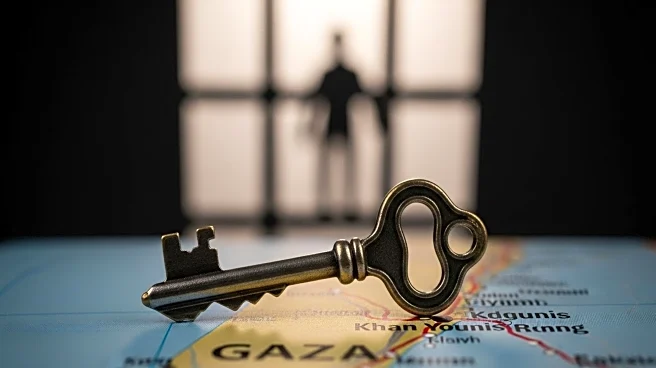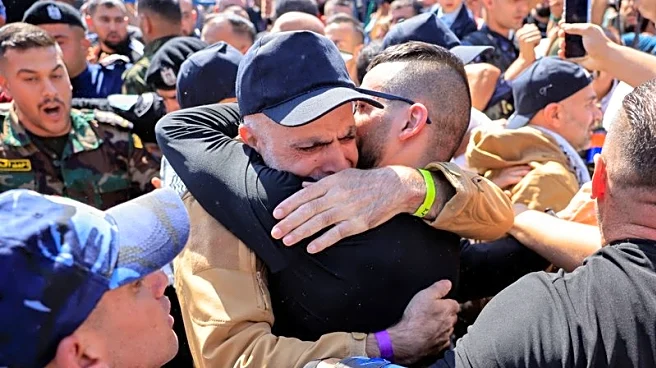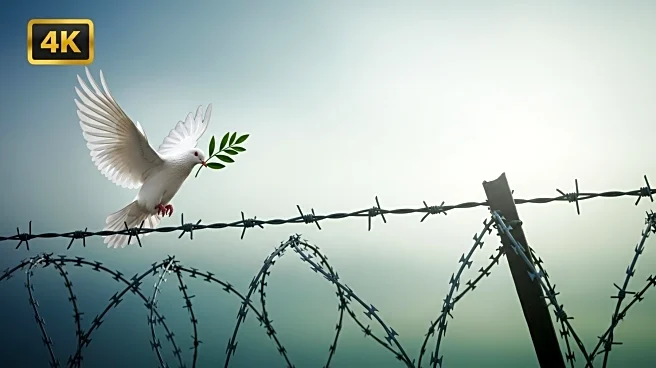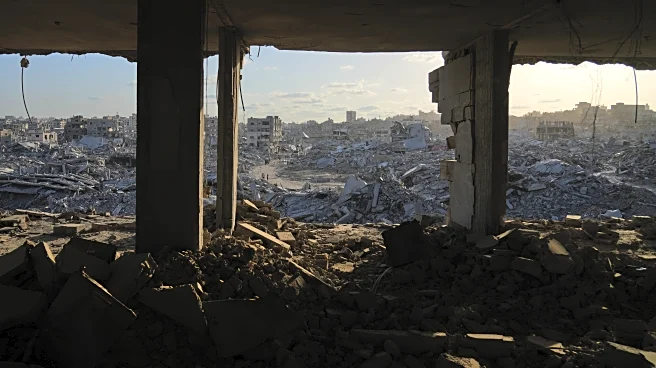What's Happening?
Thousands of people gathered in Khan Younis, Gaza, to welcome Palestinian prisoners and detainees who were released as part of a ceasefire agreement between Israel and Hamas. The release marks a significant moment in the ongoing conflict, as both sides have agreed to a temporary cessation of hostilities. The agreement facilitated the exchange of prisoners and hostages, aiming to de-escalate tensions in the region. The arrival of the freed individuals was met with emotional scenes, as families and supporters celebrated their return. This development is part of broader efforts to stabilize the situation in Gaza and improve humanitarian conditions.
Why It's Important?
The release of Palestinian prisoners under the ceasefire agreement is a crucial step towards reducing hostilities between Israel and Hamas. It highlights the potential for diplomatic solutions in resolving long-standing conflicts in the region. The agreement not only provides immediate relief to families affected by the conflict but also sets a precedent for future negotiations. The involvement of international organizations, such as the Red Cross, underscores the global interest in achieving peace and stability in the Middle East. This development could influence U.S. foreign policy, as the country has historically played a role in mediating peace efforts in the region.
What's Next?
Following the release of prisoners, both Israel and Hamas are expected to continue discussions to maintain the ceasefire and address underlying issues. The international community, including the United States, may increase diplomatic efforts to support a lasting resolution. Monitoring the situation closely, stakeholders will likely push for further humanitarian aid and reconstruction efforts in Gaza. The success of this ceasefire could pave the way for more comprehensive peace talks, potentially involving other regional players and international mediators.
Beyond the Headlines
The release of prisoners and the ceasefire agreement may have deeper implications for the socio-political landscape in Gaza. It could lead to shifts in public opinion and influence the strategies of political factions within the region. The agreement also raises questions about the role of international law and human rights in conflict resolution. Long-term peace efforts may require addressing issues such as territorial disputes, governance, and economic development to ensure stability.













